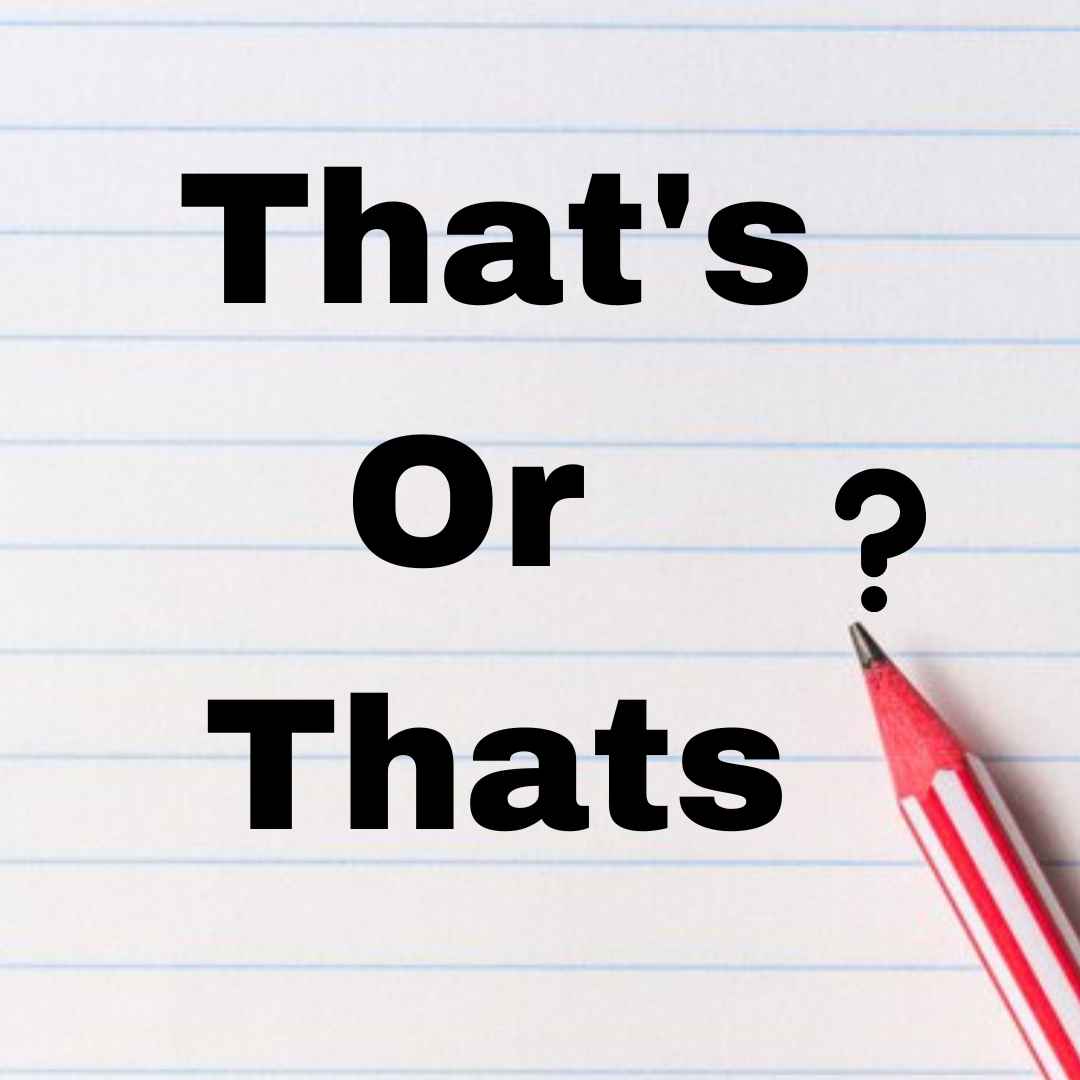Is it That's or Thats ? Understanding the Difference

Have you ever had to decide whether to write “that’s” or “thats”? You’re not by yourself! We’ll examine the grammatical conventions underlying these two terms in this comprehensive blog post, along with some simple English examples.
Understanding "That's":
“That’s” is a contraction, which means it’s formed by combining two words: “that” and “is” or “that” and “has.” When you see “that’s,” it’s like saying “that is” or “that has.
Examples:
- “That’s a beautiful flower.” (That is a beautiful flower.)
- “That’s been a long day.” (That has been a long day.)
Understanding "Thats":
“Thats” is not a correct word in English. It’s actually a misspelling of “that’s.” In written English, it’s important to remember to use the apostrophe (‘) to indicate the contraction.
Examples of Incorrect Usage:
- “Thats my favorite book.” (Incorrect)
- “Thats what I was talking about.” (Incorrect)
Read also: What is correct different or differently?
Grammar Rule:
The correct form is always “that’s” with the apostrophe. The apostrophe replaces the letter “i” in “is” or “ha” in “has.”
Correct Usage:
- “That’s a big dog.” (That is a big dog.)
- “That’s been a great experience.” (That has been a great experience.)
Explanation:
Using “that’s” correctly helps to make your writing clear and grammatically correct. It’s a simple way to combine words and make sentences more concise.
Conclusion
To sum up, “that’s” is always the proper form when it has an apostrophe. By adhering to this straightforward guideline, you may assist your writing avoid common grammatical errors. You’ll be using “that’s” correctly every time if you only remember to use the apostrophe the next time you’re not sure!
FAQs
Understanding the difference between “that’s” and “it’s” is important for clear writing. “That’s” is short for “that is” or “that has,” and “it’s” is short for “it is” or “it has.” The main difference is how we use them. We use “that’s” when talking about something specific, like a thing or idea. “It’s” is more general, and used to talk about actions or qualities. For example, “That’s a big dog” talks about a specific dog, while “It’s raining” talks about the weather. Knowing when to use each one helps make writing easier to understand.
Understanding when to use “this” or “that” can make your writing clearer and more precise. Use “this” when referring to something close by or happening in the present moment. For example, “I like this book” when holding a book. Use “that” when referring to something farther away or in the past or future. For instance, “I want that cake” when pointing to a cake across the room. By choosing the right word, you help your reader understand exactly what you’re talking about.
Using “that’s” for plural forms is not common in standard English grammar. “That’s” is a contraction of “that is” or “that has,” and it is typically used for singular nouns or subjects. When referring to multiple items or subjects, it’s more appropriate to use “those are” or “those have.” For example, instead of saying “That’s my friends,” you would say “Those are my friends.” By using the correct grammar, you ensure clarity and accuracy in your communication.
Knowing when to avoid using “that” in your writing can improve clarity and conciseness. While “that” can be helpful for indicating specific things or ideas, it’s often unnecessary and can make sentences wordy. You can avoid using “that” when the meaning is clear without it. For example, instead of saying “I know that he is busy,” you can simply say “I know he is busy.” Similarly, in phrases like “I think that we should leave now,” you can say “I think we should leave now” without losing meaning. By omitting unnecessary “that,” you can make your writing more direct and easier to read.
Let’s talk about whether a ball is “this” or “that.” When you’re holding a ball or talking about one nearby, you can say “this ball.” That’s because “this” is used for things close to you or happening right now. For example, “I like this ball” when you’re holding it. On the other hand, if you’re talking about a ball that’s farther away or not in your immediate surroundings, you would use “that ball.” For instance, “I want that ball over there” when pointing to one across the room. So, whether a ball is “this” or “that” depends on how close it is to you and the context of the situation.